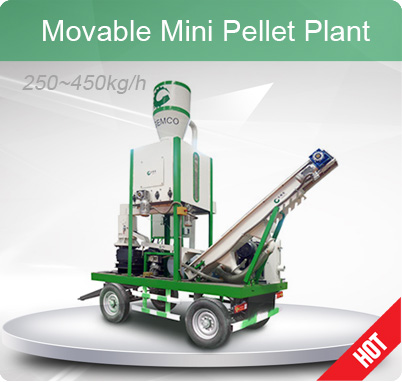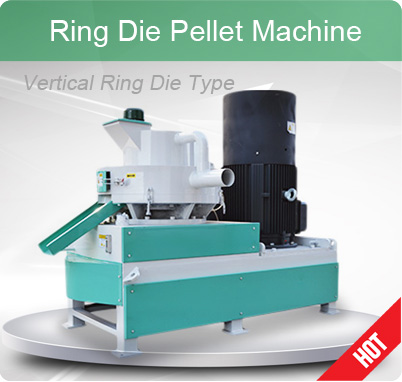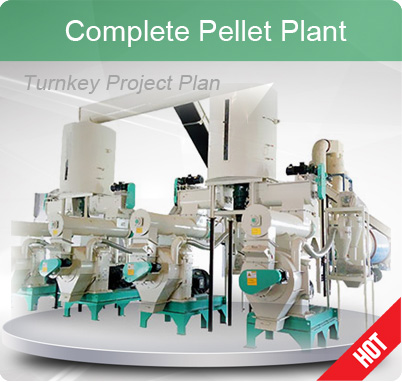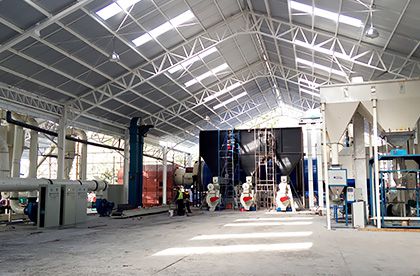Feed Cooling Process: Importance of Animal Feed Pellet Cooler in the Production Line
In the animal feed production process, feed cooling process is an indispensable part. However, in the eyes of many animal feed manufacturers, this link is not very important. But this seemingly simple step is carried out to ensure the quality of feed, extend the shelf life, to ensure that animal health of a heavy responsibility. Next, we will explore the scientific principles and process mysteries behind this link.

Favourable Aniaml Feed Pellet Cooler Machines in Feed Factory
The Significance of Feed Cooling in the Animal Feed Pellet Production Line
Pellet feed absorbs a large amount of heat and moisture from the steam in the conditioner as well as the additional heat from the mechanical friction of the animal feed pelleting machine. Generally, the temperature of the pellets out of the animal feed making machine is 75~95℃ and the moisture reaches 14%~17%. Such a high temperature and moisture is not conducive to the storage and transportation of feed. At the same time, high-temperature and high-moisture pellets are softer and easier to be pulverized. Therefore, animal feed plant manufacturers should cool the pellets in time to reduce the temperature and moisture of the pellets to improve the hardness of the feed pellets. The following will show you the importance of the cooling process with some data clearly.
- Extending the Shelf Life of Feed by 6-12 Months
The cooling process reduces the temperature of the feed pellet from about 80°C to about 25°C. This not only helps to avoid humidity and temperature-related problems, but also avoids microbial growth caused by humidity and temperature and extends the shelf life of the feed for up to 6 to 12 months.
- Reducing Feed Pellet Breakage by Nearly 30%
After the cooling process, feed pellets' moisture content can be reduced from 15-17% when they are first processed to 10-12%. This results in a stronger pellet with almost 30% less breakage.
- Reducing the Risk of 40% Particle Feed Powdering or Fragmentation
The cooled pellets shrink uniformly on the surface and inside, reducing the risk of chalking or crumbling of the pellets during packaging, transportation and handling by about 40%.
- Lowering Nutrient Loss by Almost 20%, Enhancing Economic Benefits by 15%
Proper cooling slows the rate of water evaporation, resulting in a nearly 20% reduction in nutrient loss from the feed. It helps to improve the feed utilization rate, and breeding economic efficiency is improved by about 15%.
Factors Influencing Cooling Efficiency of Animal Feed Pellets
In the animal feed production line, the factors affecting the cooling effect are mainly the cooling time of the cooler machine and the setting of the cooling air volume. How long cooling time and cooling air volume are needed for feed pellets? To help you better understand the influence of feed diameter on cooling time and cooling airflow, I will give you two tables for your reference.
Cooling Time Required for Feed Pellets of Different Diameters
| Feed pellet diameter / mm | 2.5 | 4.5 | 6.0 | 8.0 | 10.0 | 12 | 16 |
|---|---|---|---|---|---|---|---|
| Minimum cooling time / min | 5~6 | 6~8 | 8~10 | 13~15 | 13~15 | 15~17 | 18~20 |
Cooling Air Volume Required for Feed Pellets of Different Diameters
| Feed pellet diameter / mm | ≤5 | 6 | 10 | 20 | 22 |
|---|---|---|---|---|---|
| Air volume / [m³ / (t · min)] | 22 | 25 | 28 | 31 | 34 |
If you want to learn more bout the significance of the cooling process or the factors that affect the cooling effect, please ask us directly!
Guide for Choosing Animal Feed Pellet Coolers in Production Plants
Feed Pellet Cooler Machines commonly used in animal feed production lines are diversified, but they are usually categorized into two main types: Vertical Coolers and Horizontal Coolers. However, regardless of the pellet cooler design, when selecting a feed pellet cooler machine, animal feed mills should aim for efficient heat transfer and precise temperature control to ensure that the feed pellets maintain optimum quality and nutritional value during the feed production process.

Horizontal Cooler Machine in Animal Feed Pellet Processing Line for Sale
- Vertical Cooler Machine: usually consists of a rotating drum, a blower and a discharge system, which utilizes rotary motion and strong wind to cool the hot feed rapidly.
- Horizontal Cooler Machines: use horizontal drums, and cooling is accomplished by a built-in blower and discharge system.
How Animal Feed Pellet Cooler Machines Work?
The working principle of the feed cooler is basically the same. The high-temperature, high-humidity pellet feed is fed into the cooler from the inlet of the cooler and stays in the machine for a period of time. At the same time, the fan works, so that the cold air through the material layer for heat exchange, takes away the heat and moisture emitted by the granular material. Thus, the pellet material is cooled to achieve the purpose of cooling and dehumidifying.
If you have any question, click below for a free consultation! If you want to learn more about Other Processes and Machines of Animal Feed Pellet Manufacturing Line, we can also offer help.
Counterflow Cooler - Vertical Feed Pellet Cooler Machine
Counterflow cooling machine is a kind of high-efficiency feed pellet cooling equipment commonly used in animal feed processing lines. Its working principle is by reversing the flow of heat-treated feed pellets with a cooling medium (such as cold air or cold water), so that the pellets are in full contact with the cooling medium during the cooling process, thus rapidly reducing the temperature of the pellets. Counterflow feed pellet coolers are widely used in animal feed production due to their superior cooling effect and adjustability.

Best Price Counterflow Cooler Machine in GEMCO's Feed Pellet Plant for Sale
Advantage of Counterflow Cooler Machines:
- Maintain Feed Pellet Integrity and Nutrient Content: Counterflow feed cooler machines can quickly and uniformly reduce pellet temperature, extend contact time, reduce breakage, and maintain feed pellet integrity and nutrient content.
- Control Temperature and Air Velocity Flexibly: The temperature and air velocity of the counterflow pellet cooler machine can be flexibly controlled to meet different feed production requirements.
Conveyor Belt Cooler - Horizontal Feed Pellet Cooler Machine
Conveyor belt cooling machine is a common cooling device in animal feed production lines. It adopts a conveyor-like structure to evenly distribute heat-treated pelletized feed on a running conveyor belt, which gradually cools the pelletized feed to ambient temperature or lower by movement (0.65~1.8m/min). Conveyor belt feed pellet coolers typically include a conveyor belt system, a cooling medium circulation system and a temperature control device. Conveyor belt feed cooler machines are widely used in animal feed processing due to their flexibility and efficiency.
Advantage of Conveyor Belt Cooler Machines:
- Adjustable Cooling Speed and Temperature: The advantage of conveyorized animal feed pellet cooling machines is that they can carry out the cooling process in a continuous and automated manner, ensuring that the temperature of the feed particles is uniformly lowered and damage or breakage is avoided.
- Continuous and Automated Cooling Process: The adjustable cooling speed and temperature of the conveyor belt pellet cooling machine meet different feed requirements. It is suitable for multi-scale production lines.
GEMCO: Mastering Animal Feed Processing Engineering with Excellence
The feed pellet cooling process has a vital role in the animal feed production line. The importance of this process cannot be ignored by animal feed pellet plant investors, and to ensure the efficient operation of the cooling section, it is crucial to choose high quality animal feed production machines. If you are anxious about this, you can contact us. GEMCO, as an animal feed production machine manufacturer, our company is committed to providing advanced and reliable feed cooling equipment and complete feed pellet production lines to meet the different production needs of our customers.
As your reliable partner, we can not only provide customized feed mill layout design and processing equipment configuration suggestions for each customer, but also give full support in technical support and after-sales service. Choosing our company is a guarantee of quality, innovation and reliability. Contact us now to build a successful future together!











